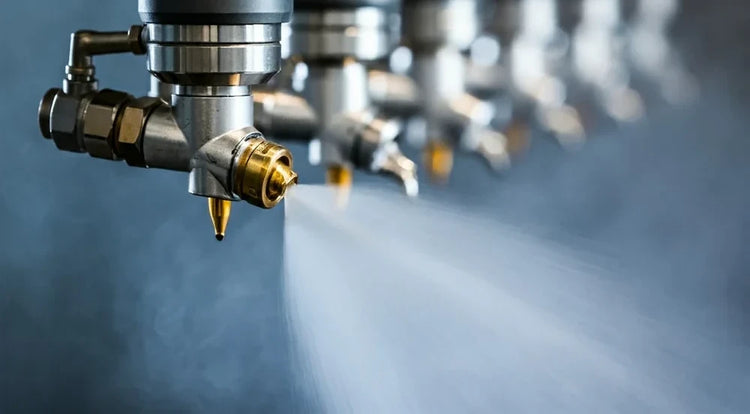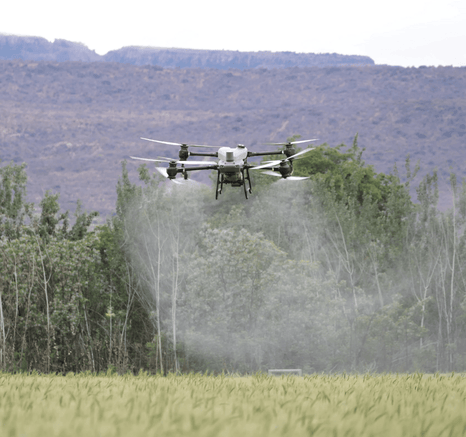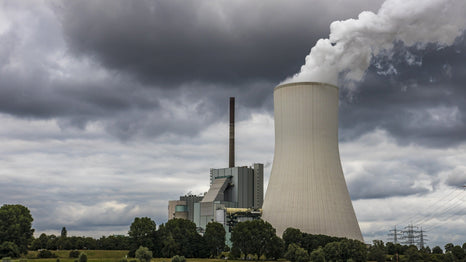Getting your brewery super clean (or SuperKlean 😉) is a big deal, right? It's not just about making sure things look good; it's about making sure your beer tastes the same every time and that you're following all the rules. A big part of this is something called Clean-In-Place, or CIP. This is where you clean your tanks and pipes without taking them apart. And guess what's really important for that? The little thing called a cip ball. Picking the right cip ball can make a huge difference in how clean your equipment gets and how smoothly your whole operation runs.
Key Takeaways
- CIP systems clean brewery equipment without taking it apart, which saves a lot of time and effort.
- A good cip ball is super important for making sure cleaning solutions hit every spot inside your tanks.
- Picking the right cip ball means thinking about how much pressure you have and what kind of spray pattern you need.
- Using the correct cip ball helps keep your beer tasting consistent and makes sure you meet all the safety rules.
- Checking your cip ball regularly and keeping it clean stops problems before they start, making your cleaning process work better.
Understanding Clean-In-Place Systems in Breweries
Fundamentals of CIP Technology
Clean-In-Place (CIP) systems are super important for keeping things clean and consistent in breweries. These systems let you clean the inside of your equipment—tanks, pipes, and all that—without taking everything apart. This saves a ton of time and effort compared to manual cleaning. Basically, CIP uses a mix of water, chemicals, and spray nozzles for cleaning to get rid of all the gunk that builds up during brewing. It's all about keeping those batches consistent and tasting great.
Key Components of a CIP System
A CIP system isn't just one thing; it's a whole setup. You've got tanks to hold your cleaning solutions, pumps to move the liquids around, valves to control the flow, and, of course, the spray balls themselves. These spray balls are what actually blast the cleaning solutions onto the inside surfaces of your equipment. A typical CIP system includes:
- A tank for holding caustic solutions (for removing organic matter).
- A tank for acid solutions (for removing mineral deposits).
- A pump to circulate the cleaning fluids.
Benefits of Implementing CIP Technology
Switching to CIP can really change things for a brewery. First off, it makes cleaning way more consistent, which means your beer tastes the same every time. You also cut down on the amount of time spent cleaning, so you can brew more beer. Plus, it's safer for your workers because they don't have to mess around with harsh chemicals as much. And, you'll probably use less water and fewer chemicals overall, which is good for the environment and your wallet.
Implementing CIP technology offers a multitude of benefits, including enhanced product quality, reduced labor costs, improved safety, and a smaller environmental footprint. It's a win-win for breweries looking to optimize their operations.
The Importance of CIP for Brewery Operations
Ensuring Consistency and Flavor Control
In the brewing world, consistency is king. You want every batch to taste like the last, right? A solid Clean-In-Place (CIP) system is a major player in making that happen. Even the smallest amount of contamination or leftover cleaning stuff can throw off the flavor. CIP helps make sure each batch tastes exactly how it should, without any weird tastes from microbes or cleaning chemicals. If you're a craft brewer building a brand around your unique flavors, CIP is non-negotiable to keep customers happy.
Meeting Food Safety and Regulatory Compliance
Let's be real, nobody wants to drink beer that's going to make them sick. That's where food safety comes in, and CIP is a big part of that. Regulatory bodies like the FDA have strict rules about keeping food and beverage facilities clean. A well-designed CIP system helps you meet those standards, avoiding fines and keeping your customers safe. It's not just about avoiding problems; it's about showing you care about quality and safety.
Optimizing Efficiency and Reducing Downtime
Time is money, especially in a brewery. Manual cleaning takes forever, and it means your equipment isn't making beer. CIP systems clean faster and more efficiently, which means less downtime and more beer production. By automating the cleaning process, you free up your staff to focus on other important tasks, like brewing better beer. Plus, CIP can help prevent buildup in pipes and heat exchangers, keeping everything running smoothly. Think of it as an investment that pays off in increased output and reduced labor costs.
Implementing a CIP system isn't just about cleaning; it's about protecting your brand, meeting regulations, and maximizing your brewery's efficiency. It's a smart move for any brewery that's serious about quality and growth.
Selecting the Right CIP Ball for Your Brewery
Choosing the correct CIP ball is a big deal for keeping your brewery clean and running smoothly. It's not just about picking any spray device; it's about finding the one that fits your specific needs and setup. Let's break down what you need to think about.
Factors Influencing CIP Ball Choice
Okay, so what actually matters when you're picking a CIP ball? A few things really stand out. First, think about the size and shape of your tanks. A huge tank needs a CIP ball with a powerful spray, while a smaller one might be fine with something less intense. The type of residue you're cleaning also plays a role. Are you dealing with light beer residue or something stickier? That will change the kind of spray pattern and pressure you need. Finally, consider the flow rate and pressure of your CIP system. You need a CIP ball that can work with what you've already got.
Here's a quick rundown:
- Tank Size & Shape: Match the spray pattern to the tank's dimensions.
- Residue Type: Different residues require different spray intensities.
- CIP System Specs: Ensure compatibility with your existing flow rate and pressure.
Types of CIP Ball Spray Patterns
CIP balls come with different spray patterns, and each one has its strengths. Static spray balls are simple and spray in a fixed pattern. Rotary spray balls spin around, giving you better coverage. Then there are spray nozzles, which can deliver a more focused and powerful spray. Which one is best? It depends on your tanks and what you're cleaning. For example, a static spray ball might be fine for a small, regularly cleaned tank, but a rotary spray ball is better for larger tanks with hard-to-reach spots. NozzlePro is building its catalog and website, expected by May 2025, and encourages inquiries for any nozzle needs or questions.
Material Considerations for CIP Balls
What your CIP ball is made of matters a lot. Stainless steel is a popular choice because it's durable and resists corrosion from cleaning chemicals. Some CIP balls are made of plastic, which can be cheaper but might not last as long. You also need to think about whether the material is food-grade, so you don't end up with any unwanted chemicals in your beer. Picking the right material ensures your CIP ball lasts and doesn't mess with the quality of your product.
Choosing the right material for your CIP ball is not just about cost; it's about safety and longevity. A cheap material might save you money upfront, but it could end up costing you more in the long run if it corrodes or contaminates your product. Think about the chemicals you're using and the temperatures involved, and pick a material that can handle it all.
Here's a quick comparison:
|
Material |
Pros |
Cons |
|
Stainless Steel |
Durable, corrosion-resistant, food-grade |
More expensive |
|
Plastic |
Cheaper |
Less durable, may not be suitable for all chemicals |
Ultimately, the best CIP ball is the one that fits your brewery's specific needs. Take the time to assess your tanks, cleaning requirements, and system capabilities, and you'll be well on your way to a cleaner, more efficient brewery. Don't forget to consider the spray patterns available to you.
Integrating CIP Systems into Your Brewery Workflow
So, you're thinking about getting a CIP system? Great! It's not just about buying the equipment; it's about how you make it part of your everyday brewing life. Let's talk about how to actually get these systems working for you.
Planning for CIP System Installation
First things first: planning. Don't just buy a CIP system and hope it fits. Think about your brewery's layout. Where will the tanks go? How will the pipes run? Do you have enough space? Proper planning prevents poor performance. Consider these points:
- Assess your current cleaning methods. What's working? What's not?
- Map out the physical space. Account for tanks, pumps, and chemical storage.
- Estimate your cleaning needs. How often do you clean each piece of equipment?
Automating Cleaning Cycles with CIP
Automation is where CIP really shines. Instead of manual labor, you can program your system to run automatically. This means consistent cleaning, every time. Here's how to get started:
- Set up cleaning schedules. Determine the frequency and duration of each cycle.
- Program your CIP system. Use the control panel to automate the cleaning process.
- Monitor performance. Keep an eye on temperature, pressure, and chemical concentrations.
Training Staff for Effective CIP Operations
Even with automation, you need trained staff. Someone needs to monitor the system, troubleshoot problems, and make sure everything is running smoothly. Training is key. Make sure your team knows:
- How the CIP system works. Explain the different components and their functions.
- How to operate the system. Show them how to start, stop, and adjust cleaning cycles.
- How to troubleshoot common problems. Teach them how to identify and fix issues like clogs or leaks.
Integrating a CIP system is a big step, but it's worth it. It's about more than just cleaning; it's about improving efficiency, consistency, and safety. Take the time to plan, automate, and train, and you'll see a real difference in your brewery's operations.
Optimizing Your CIP Process for Peak Performance
Best Practices for Chemical Selection
Choosing the right cleaning chemicals is super important for a good CIP process. It's not just about grabbing whatever's cheapest. You need to think about what kind of gunk you're trying to get rid of, and what materials your equipment is made of. Using the wrong stuff can damage your equipment or leave behind residues that mess with your beer's flavor.
- Caustics: Great for organic stuff like proteins and hop oils.
- Acids: Good for mineral deposits and beer stone.
- Sanitizers: Kill off any unwanted microbes.
Make sure you always rinse thoroughly after each step to avoid mixing chemicals and creating unwanted reactions. Also, always follow the manufacturer's instructions for concentration and contact time.
Maintaining Optimal Temperature Control
Temperature plays a big role in how well your CIP system works. Hotter temperatures usually mean better cleaning, but you don't want to get things so hot that you damage your equipment or denature proteins, making them even harder to remove.
Here's a quick guide:
|
Cleaning Stage |
Temperature Range (°C) |
|
Pre-Rinse |
35-45 |
|
Caustic Wash |
60-75 |
|
Acid Wash |
50-65 |
|
Final Rinse |
Ambient |
Regular Audits and System Upgrades
Don't just set it and forget it! Regularly check your CIP system to make sure it's still doing its job. This means visually inspecting your spray nozzles to make sure they aren't clogged, checking chemical concentrations, and maybe even doing some microbial testing to make sure everything's sanitary. Also, keep an eye out for new technologies or chemicals that could make your CIP process even better. Maybe there's a new type of CIP ball that gives better coverage, or a more environmentally friendly cleaning chemical you could switch to. Staying up-to-date can save you time and money in the long run.
- Check spray patterns regularly.
- Monitor chemical usage and adjust as needed.
- Consider upgrading to automated systems for better control.
Troubleshooting Common CIP Ball Issues
Identifying Ineffective Spray Patterns
One of the first signs that something's amiss with your CIP ball is an ineffective spray pattern. This means the cleaning solution isn't reaching all interior surfaces of your tanks or vessels. You might notice residue buildup in certain areas, or inconsistent cleaning results. To check the spray pattern, you can run a cleaning cycle with water and then visually inspect the inside of the tank. Look for dry spots or areas where residue remains. Common causes include:
- Clogged nozzles: Debris can block the flow.
- Low pressure: Insufficient pressure reduces spray distance.
- Incorrect ball placement: The ball might be positioned poorly.
Addressing Clogging and Buildup
Clogging is a frequent headache with CIP balls. It happens when solids from the brewing process, like hop particles or yeast clumps, accumulate inside the ball or nozzles. This reduces the spray's effectiveness and can even stop the ball from rotating. Here's how to tackle it:
- Regular rinsing: Flush the system with clean water after each cleaning cycle.
- Filter installation: Add filters to your CIP system to catch debris before it reaches the CIP ball.
- Chemical cleaning: Use a strong caustic solution periodically to dissolve stubborn buildup.
It's important to choose the right chemicals and concentrations to avoid damaging the CIP ball material. Always consult the manufacturer's guidelines.
Preventative Maintenance for CIP Balls
The best way to avoid CIP ball problems is through regular preventative maintenance. This includes scheduled inspections, cleaning, and replacement of worn parts. Here's a simple maintenance schedule:
- Weekly: Inspect spray patterns and check for clogs.
- Monthly: Disassemble and clean CIP balls thoroughly.
- Annually: Replace worn seals and bearings.
By following these steps, you can keep your CIP system running smoothly and ensure consistent cleaning results.
Case Study: Enhancing Cleanliness with a New CIP Ball System
Challenges with Previous Cleaning Methods
Before upgrading, many breweries face similar cleaning challenges. Think about a smaller brewery, let's call it "Stoutsville Ales." They were struggling with inconsistent cleaning using manual methods. This meant inconsistent beer flavor from batch to batch. They also had high labor costs because employees spent hours scrubbing tanks. Plus, there were safety concerns with handling harsh chemicals. It was a mess, and they knew they needed a better way.
Implementation of the New CIP Ball System
Stoutsville Ales decided to invest in a new CIP system with advanced spray ball technology. They installed a CIP skid with separate tanks for caustic and acid solutions. The system featured a high-efficiency pump and rotating spray balls in each tank. They also worked with a chemical supplier to optimize their cleaning solutions. The new system automated the cleaning cycles, reducing the need for manual labor. Here's a quick breakdown of the key steps:
- Assessment of tank sizes and soil levels.
- Selection of appropriate CIP ball type and size.
- Installation of the CIP system and spray balls.
- Programming of automated cleaning cycles.
- Staff training on the new system.
Measurable Results and Improved Outcomes
After implementing the new CIP ball system, Stoutsville Ales saw significant improvements. Beer quality became more consistent, leading to better customer reviews. Downtime for cleaning was reduced by 40%, allowing them to brew more beer. Labor costs decreased because the automated system required less manual work. The brewery also improved its safety record by minimizing chemical exposure. Here's a summary of the results:
- Improved beer quality and consistency.
- Reduced cleaning downtime by 40%.
- Decreased labor costs.
- Enhanced safety for employees.
The new CIP system transformed Stoutsville Ales' cleaning process. It not only improved efficiency and safety but also had a positive impact on beer quality and consistency. This case study demonstrates the value of investing in modern CIP technology for breweries of all sizes.
Conclusion
So, picking the right CIP ball is a big deal for keeping your brewery clean. You've got to think about things like how big your tanks are, how often you clean, and if you plan to grow. A CIP ball that's the right fit means everything gets really clean, and you don't waste a bunch of water or chemicals. Talking to the folks who make this equipment and thinking about what you'll need down the road can really help you make a good choice for your brewery.











